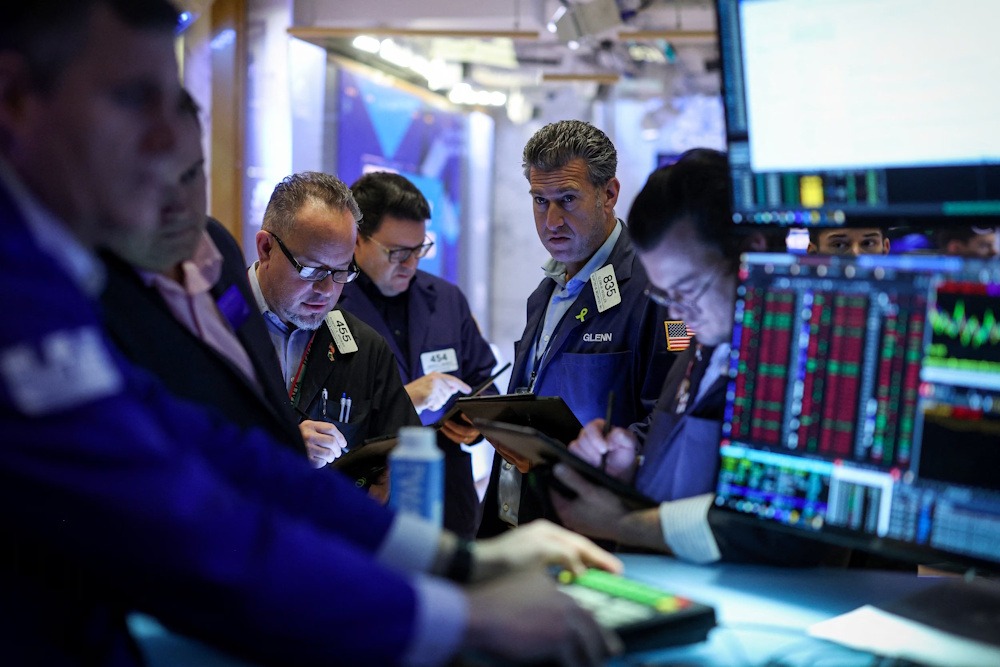
Futures associated with the major averages have shown an uptick, driven by President Donald Trump’s enactment of a spending package that concludes the longest federal government shutdown in U.S. history. Investors are currently preparing for an influx of data that was delayed due to the closure, although the White House has indicated that key metrics for October may not be published at all. In other developments, the surge in artificial intelligence bolsters Cisco Systems’ choice to raise its annual financial outlook, as the U.K. economy experiences modest growth in the third quarter.
Dow Futures indicated an upward trajectory on Thursday, as investors expressed optimism following the conclusion of a historically prolonged federal government shutdown. By 02:59, the Dow futures contract had risen by 89 points, or 0.2%, S&P 500 futures had climbed by 6 points, or 0.1%, and Nasdaq 100 futures had climbed by 37 points, or 0.2%. The principal indices concluded with a varied performance on Wednesday. The blue-chip Dow Jones Industrial Average achieved a new record closing high, while the benchmark S&P 500 also experienced a slight increase. However, the Nasdaq Composite experienced a decline, indicative of a shift away from high-valued technology stocks. A media report indicating that OpenAI, the creator of ChatGPT, may face higher costs and cash burn than previously anticipated has somewhat dampened sentiment. This development raises additional concerns regarding inflated valuations in the technology sector driven by artificial intelligence. Nonetheless, the AI semiconductor firm Advanced Micro Devices experienced a 9% increase following its announcement of a $100 billion target for data-center revenue.
U.S. President Donald Trump enacted legislation to release funding and conclude the longest government shutdown in U.S. history late on Wednesday, following the approval of the spending package by the Republican-controlled House of Representatives. The legislation, designed to sustain government funding until January 30, received approval in the House with a vote tally of 222 to 209, predominantly reflecting party alignment. This week, the Senate approved the measure. In a ceremony held at the Oval Office, Trump enacted the legislation that guarantees the reversal of federal employee layoffs implemented by the White House amid the shutdown, thereby ensuring the continuation of paychecks for these workers. Nonetheless, a contention regarding the imminent expiration of enhanced Affordable Care Act subsidies for millions of Americans—the central issue underpinning the shutdown—remained largely unaddressed. The conclusion of the 43-day shutdown is expected to facilitate the return of essential data releases, which are instrumental for investors and policymakers in assessing the vitality of the U.S. economy. “With a bit of luck, we may see job numbers starting early next week,” analysts remarked. Officials from the Trump administration have indicated that the employment and inflation data for October may not be released due to the ongoing shutdown. If this is the case, it may result in Federal Reserve officials lacking crucial data ahead of their upcoming interest rate decision in December.
Shares of Cisco Systems experienced an increase of over 7% in after-hours trading following the company’s upward revision of its annual financial guidance. In a bet on an increase in demand for the equipment essential for substantial data center expansion driven by the AI boom, the California-based company indicated that it anticipates fiscal 2026 revenue to fall between $60.2 billion and $61 billion, compared to earlier estimates of $59 billion to $60 billion. Full-year adjusted per-share earnings are projected to range from $4.08 to $4.14, an increase from the prior estimate of $4 to $4.06. Cisco, reporting fiscal first quarter results that exceeded expectations, forecasted $3 billion in AI infrastructure revenue for the current year. The firm’s share price has surged by approximately 25% this year, highlighting the advantage it has gained from companies accelerating their efforts to enhance data centers and transition workloads to the cloud in order to leverage and ultimately capitalize on the potential of AI.
The U.K. economy experienced modest growth in the third quarter; however, it contracted in September, preceding what is anticipated to be a budget that raises taxes, as proposed by Chancellor Rachel Reeves later this month. Data released earlier Thursday by the Office for National Statistics indicated that U.K. gross domestic product experienced a modest increase of 0.1% in the July to September period, following a growth of 0.3% from April to June. The U.K. economy experienced a contraction in September, as evidenced by a 0.1% decline in monthly GDP, which is a deterioration from the stagnation observed in August, indicating a challenging final quarter ahead. In September, the U.K. economy recorded an annual expansion of 1.3%, reflecting a slight downward revision from the 1.4% growth observed in the preceding month.
Gold prices exceeded the $4,200 per ounce mark, continuing their recent upward trajectory as traders expressed uncertainty regarding the U.S. economic outlook, despite lawmakers’ decision to conclude the nation’s longest government shutdown. The yellow metal has experienced a consistent increase over the past week, driven by a series of disappointing private indicators regarding the U.S. labor market, which have fueled speculation that the Federal Reserve may lower interest rates in December. However, the momentum of gold’s gains has decelerated in recent sessions, as media reports indicate a division among Fed officials regarding a potential rate reduction next month. The ongoing accumulation of gold by central banks, particularly in China, has contributed positively to bullion prices. Recent data indicated that the People’s Bank of China acquired gold for the 12th consecutive month in September.
